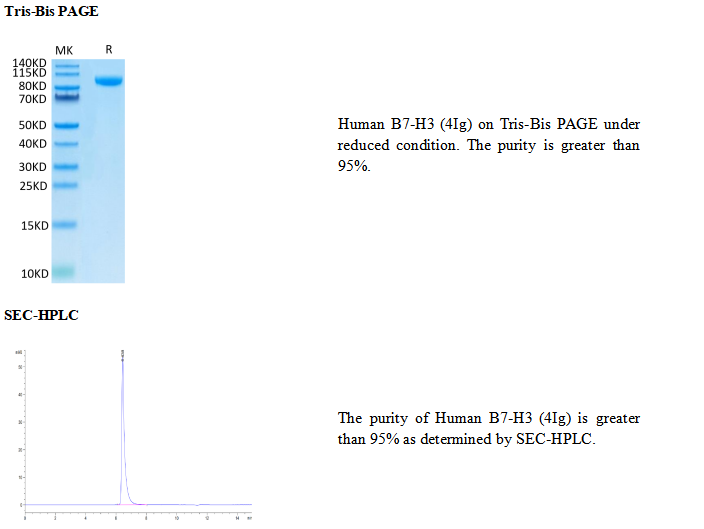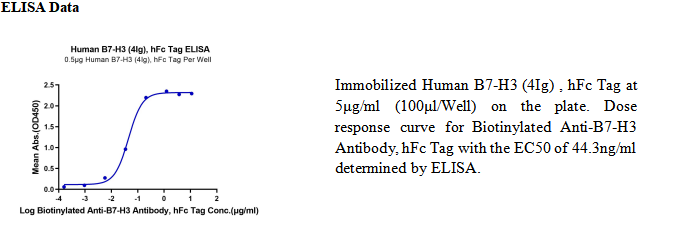Human B7 homolog 3 (B7-H3) is a member of the B7 family of immune proteins that provide signals for the regulation of immune responses. Other family members include B7-1, B7-2, B7-H1/PD-L1, B7-H2, and PD-L2. B7 family proteins are type I transmembrane immunoglobulin (Ig) superfamily members that contain extracellular Ig V-like and Ig C-like domains with a short cytoplasmic tail. Among the family members there is about 20 - 40% amino acid (aa) sequence identity. B7-H3 was initially reported to be a 316 aa type I transmembrane precursor protein that contained a signal sequence, an extracellular region with one V-type and one C-type Ig domain, a transmembrane segment and a short cytoplasmic tail. Subsequent studies have identified a second 110 kDa form whose precursor is 534 aa in length. Termed 4IgB7-H3 or B7-H3b, this molecule has two additional Ig-like domains (one V‑type and one C-type) and shows a ubiquituous expression pattern. It would appear that the human 4Ig form is the principal, if not the only form of B7-H3. Its precursor contains a 26 aa signal sequence, a 435 aa extracellular region, a 31 aa transmembrane domain, and a 42 aa cytoplasmic tail. The four Ig-like domains alternate between V-type and C‑type, and apparently are the consequence of a V-C type tandem duplication. B7-H3b is expressed on dendritic cells as well as activated T, B and NK cells.
高纯度、高活性、低内毒素、高批间一致性
产品数据


-25 ~ -15℃保存,收到货之后有效期1年。 复溶后, 无菌条件下,-85 ~ -65℃保存,3个月有效期。





